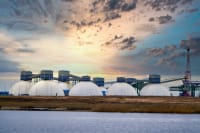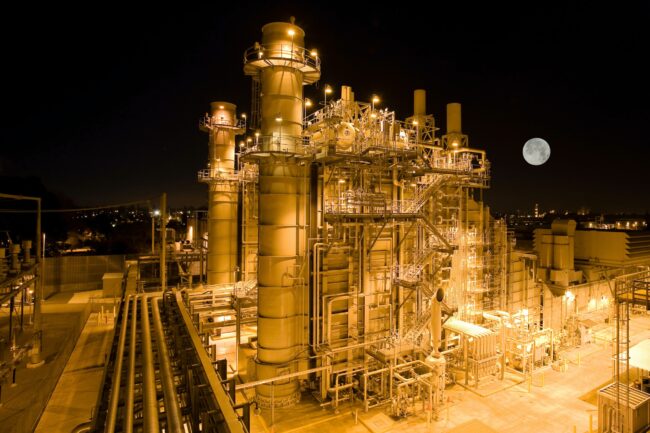Part 1: The Future of Natural Gas
Industry, Insights
30 June 2023
Kaleigh Habeck

As observers of the natural gas industry, we have witnessed its growth and impact on job creation. With increasing environmental concerns, the future of natural gas holds promise as a bridge to a greener energy landscape. This essay explores the evolving role of natural gas, its potential for job growth, and its contribution to a sustainable future.
The Changing Energy Landscape
The energy landscape is undergoing a transformative shift, driven by the urgent need to reduce greenhouse gas emissions and combat climate change. As we strive to meet the goals set by the Paris Agreement and transition to a low-carbon future, renewable energy sources have rightfully taken the spotlight. Wind and solar power have experienced remarkable growth, becoming increasingly cost-competitive and widely adopted. However, it is crucial to recognize that a complete and rapid transition to renewables is a complex challenge that requires a balanced and pragmatic approach.
While renewable energy sources are essential for decarbonization, they face certain limitations. The intermittent nature of wind and solar power challenges grid stability and reliability. The sun does not always shine, and the wind does not always blow. These intermittencies can lead to fluctuations in energy supply and necessitate backup solutions for when renewable sources cannot meet demand. As a flexible and dispatchable energy source, natural gas provides an effective solution to address these intermittency issues.
Moreover, natural gas has a lower carbon intensity than other fossil fuels like coal and oil. When combusted, it emits fewer greenhouse gases and pollutants, making it a cleaner alternative for power generation, industrial processes, and heating applications. This inherent advantage positions natural gas as a viable transition fuel, bridging high- and low– carbon energy systems.
In addition to its environmental benefits, natural gas offers advantages in terms of existing infrastructure and supply chain capabilities. The natural gas industry has extensive pipeline networks, storage facilities, and expertise. Leveraging this infrastructure to support the integration of renewables and facilitate the transition to a cleaner energy mix can be both cost-effective and efficient.
The future energy mix will likely comprise a hybrid model, with natural gas as a transitional component alongside renewables. This hybrid system will maximize the benefits of renewable energy while ensuring grid stability, energy security, and affordability. As renewable technologies continue to advance and costs decline, the role of natural gas can gradually evolve to become a backup source or a complement to renewables during peak demand periods.
Natural Gas as a Transition Fuel
Natural gas has emerged as a crucial transition fuel for a sustainable energy future. One of the primary advantages of natural gas as a transition fuel is its lower carbon intensity. When combusted, natural gas emits significantly fewer greenhouse gases and pollutants than coal and oil. Substituting coal-fired power plants with natural gas-fired plants can lead to substantial emissions reductions and improve air quality, thereby mitigating the adverse environmental impacts of fossil fuel combustion.
Furthermore, natural gas offers advantages in terms of flexibility and reliability. Unlike intermittent renewable energy sources like wind and solar, natural gas power plants can operate continuously and respond quickly to changes in electricity demand. This flexibility ensures grid stability, making natural gas an ideal complement to intermittent renewables, which require backup solutions during periods of low generation.
Speaking of electricity demand, natural gas has multiple applications beyond power generation. It is widely used in residential and commercial heating, industrial processes and as a feedstock for producing chemicals and fertilizer. Significant emissions reductions can be achieved by replacing more carbon-intensive fuels in these sectors with natural gas. This versatility makes natural gas a valuable fuel for various industries, supporting economic growth while reducing environmental impact.
However, it is essential to acknowledge that natural gas is not a long-term solution. While it provides a cleaner alternative to coal and oil, it is still a fossil fuel contributing to greenhouse gas emissions. To achieve the long-term goal of a carbon-neutral energy system, it is essential to continue investing in renewable energy sources and energy efficiency measures.
As renewable technologies continue to advance and become more cost-competitive, the role of natural gas is expected to evolve. Natural gas can serve as a bridge fuel during the transition phase, gradually phasing out as renewable energy sources become more dominant. This transition allows for a smooth and economically viable pathway toward a sustainable energy future.

Job Creation in the Natural Gas Industry
The natural gas industry has a track record of generating significant job opportunities across various sectors in the United States and globally – the U.S. alone is home to almost 119,000 natural gas employees. The industry’s growth has catalyzed employment in both traditional and emerging fields, from exploration and production to infrastructure development and operations.
Upstream
The upstream sector of the natural gas industry, which involves exploration and production activities, has been a significant source of job creation. Skilled professionals such as geologists, geophysicists, petroleum engineers, and field technicians are in high demand. These professionals are responsible for identifying and assessing natural gas reserves, designing drilling operations, and ensuring efficient extraction methods. Additionally, the upstream sector provides employment opportunities for supporting industries, including equipment manufacturing, well services, and supply chain management.
Midstream & Downstream
The midstream and downstream sectors of the natural gas industry focus on the transportation, storage, and distribution of natural gas, as well as its utilization in various applications. This includes constructing and maintaining pipelines, natural gas processing plants, liquefied natural gas (LNG) terminals, and storage facilities. These sectors require a range of skilled workers, including pipeline technicians, operators, engineers, construction workers, and logistics personnel. Additionally, the downstream sector encompasses using natural gas in power generation, heating, manufacturing, and other industries, which further contributes to job creation across energy generation, manufacturing, and construction sectors.
Emerging Technologies
As the natural gas industry evolves, it creates opportunities for employment in emerging fields and technologies. For example, developing advanced extraction techniques like hydraulic fracturing (fracking) has driven the demand for specialized professionals in reservoir engineering, environmental monitoring, and regulatory compliance. Similarly, the expansion of natural gas in the transportation sector has created jobs in vehicle manufacturing, fueling infrastructure, and fleet management. Moreover, integrating renewable energy sources with natural gas, such as hybrid power plants, presents new job creation opportunities at the intersection of multiple industries and technologies.
Indirect Impact
Beyond direct employment in the natural gas industry, job creation extends to indirect and induced sectors. Indirect job creation occurs through the supply chain and supporting industries that provide goods and services to the natural gas sector, such as equipment manufacturers, service providers, and engineering firms.
Induced job creation refers to the economic multiplier effect, where increased economic activity in the natural gas industry leads to additional employment in sectors like retail and hospitality, as income generated by the industry circulates in the broader economy. This is where we come in! The Global Edge has the resources necessary to place candidates in their dream roles working with natural gas across upstream, midstream, and downstream sectors. Visit our careers page to view our open roles at www.globaledgegroup.com/candidates/roles.
Going Forward
Part 1 of this article has explored the advantages of natural gas as a crucial transition fuel on the path to a sustainable energy future. We have highlighted its lower carbon intensity and flexibility, which make it an ideal complement to intermittent renewable energy sources. Leveraging the existing infrastructure and capabilities of the natural gas industry allows for the efficient integration of renewables, but our journey does not end here. Part 2 will delve deeper into changing market conditions, environmental responsibility, and government policies and regulations. Click here to read part 2 and gain further insight and a comprehensive understanding of the evolving natural gas landscape.

